Girl with an unhealthy obsession with our favorite wolves. Anime, manga,history facts,nothing is enough
Don't wanna be here? Send us removal request.
Text



Are we going to talk about TV Asahi's currently ongoing Shinsengumi series (also on Viki) or are we just pretending this isn't happening?
34 notes
·
View notes
Text
Ichimura Tetsunosuke is mentionned in Tsukikage by Shimada!!
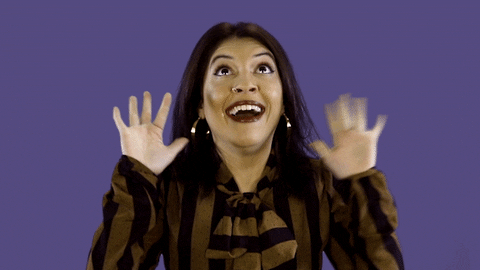
My son is canon!!!!
14 notes
·
View notes
Text
Okita's letters - 8 pieces
Inoue Genzaburo - 2
Admiral Enomoto (his real name was Kamejiro, and he signed his name with it. He mostly wrote to his mother and sister) - 13 letters
Matsudaira Taro (vice-president of the Ezo Republic) - 4
Otori Keisuke - 6
Jules Brunet - 4
Furuya Sakuzaemon (another Ezo Republic figure) - 4
10 notes
·
View notes
Text

From "Photography in Japan 1853—1912." The caption reads, "Matsumoto Ryojun and assistant, ca. 1860-1861," meaning this was most likely taken in Nagasaki and, by looking at his hair, prior to Dr. Matsumoto being a fully-fledged doctor.
35 notes
·
View notes
Text
Who knew the Dead Samurai Fandom was a thing?
57 notes
·
View notes
Text
Okita's height
Okita Souji's appearance is still a mystery.
Many people have studied his face, so let's leave that for now, but what about his height?
Many sources give his height as "5 shaku 5 sun" (5'5" or approximately 167 cm).
This seems to be based on an article titled "Another Look at Okita Souji" (沖田総司別見), which appeared in the April 1972 issue of the "Historical Research" (歴史研究) magazine.
According to that article, a man named Sanbongi Mitsuo (三本木密雄), a samurai of the Nihonmatsu domain, once met Okita Souji, and "when they were standing side by side, they turned their heads to the side and talked," and since Sanbongi Mitsuo was "5' 5" tall, it is estimated that Okita was also about 5' 5" tall.
This text was written by Endo Koukei (遠藤幸威). He said that his mother told him what his great-grandfather had heard from Sanbongi Mitsuo.
Considering that Endo was the last of the Omi Mikami clan lords, such a story must have been told among the family members.
(Incidentally, the book "沖田総司おもかげ抄" written by Mori Makiko, which is in my possession, mentions "Endo Kouzo" (遠藤幸蔵), but it seems to be a misprint.)
However, we do not know where this Sanbongi Mitsuo met Okita, in Kyoto or in Edo. The Nihonmatsu clan was also in charge of guarding Kyoto, so it's possible that he met Okita in Kyoto.
Okita was between 22 and 26 years old when he was in Kyoto, so he had already finished growing. If Sanbongi met him in Kyoto, we can almost say for certain that he was about 5'5".
However, if they met in Edo, things would be a little different.
Sanbongi Mitsuo also says that Okita disliked taking baths [T/N: the original text used "風呂", which could mean he disliked going to "bath houses" instead]. However, in "沖田総司おもかげ抄", an old woman in Kyoto who had feelings for Okita at the time said that "Okita was very clean and neat," and the author, Mori Makiko speculates that "As a boy in the Shieikan, he might have disliked taking a bath, but since he became a member of the Shinsengumi in his youth, he might have started to pay more attention to his personal appearance and cleanliness."
Indeed, considering that he accompanied Kondo Isami to Nijo Castle and other places after joining the Shinsengumi, he must have been careful about his appearance, and it's unlikely that Kondo Isami would have tolerated a filthy appearance.
If so, it's highly likely that Sanbongi Mitsuo met Okita in Edo.
It depends on when they met in Edo, but if they met when Okita was a boy, it is possible that he grew taller after that.
Yagi Tamesaburo, the second son of Yagi Gennojo's family, who lived in Mibu, Kyoto, describes Okita as "a tall, dark-skinned man with broad shoulders".
These are the 3 people Tamesaburo described as "tall":
Serizawa Kamo
Noguchi Kenji
Okita Souji
What he said about Hijikata Toshizo:
"he had a toned face with large eyes"
"he was sullen and didn't chat much"
"he was said to be the son of an apothecary, but didn't appear like one at all."
Among the Shinsengumi, Hijikata Toshizo is the only one whose height is known. A specific number is given in "両雄士伝捕遺", "he is 5 shaku 5 sun (5'5")".
The 5 shaku 5 sun is the same as Okita's, but why did Tamesaburo not refer to Hijikata as a "tall man" as well?
The average height at that time was said to be around 5'1" (155-157 cm).
Hijikata, who was more than 10 cm taller than the average height, must have been "tall" as well.
Kondo Isami was shorter than Hijikata by the amount of a topknot (162 to 163 cm), and Saito Hajime was estimated to be around 175 cm.
Shimada Kai is said to be about 6 feet tall (180 cm), and Yamazaki Susumu is also said to be tall.
At the time Okita was staying at the Yagi residence, Tamesaburo was between 13 and 16 years old, a very impressionable age, but from the perspective of the Shinsengumi as a whole, his impression of Hijikata was not that he was "tall" but that he was "moody" and "didn't look like an apothecary's son" mentioned above.
If so, Serizawa, Noguchi, and Okita would have given him the strongest impression of being "tall" among the Shinsengumi.
Some say that Okita was 5'7" (172 cm), so he may have been at least that tall. At the very least, Okita was probably taller than Hijikata.
References
新選組始末記 子母澤寛全集一 子母澤寛
沖田総司おもかげ抄 森満喜子
歴史研究 1972年4月号 新人物往来社
沖田総司伝私記 菊池明
聞き書き徳川慶喜残照 遠藤幸威
両雄士傳 補遺 橋本清淵編輯 多摩デジタル新選組資料館
Wikipedia
#heights#appearance#translated from japanese#recommended#Shinsengumi#Okita souji#hijikata toshizo#kondo isami
37 notes
·
View notes
Text
Kondo’s death poem
This is Kondo Isami’s death poem, composed at his execution:
A lone soldier held captive, My tears flow as I think of my lord. With sincere loyalty, I can preserve my honor with death, Like the city of Suiyang a thousand years before. There is nothing to say on this day, But to allow my sacrifice to speak for itself. Let the long sword fall like a flash of lightning, To repay my lord’s kindness with my life.
Original
孤軍援絶作俘囚 顧念君恩淚更流 一片丹衷能殉節 睢陽千古是吾俦 靡也今日複何言 取義舍生吾所尊 快受靈光三尺劍 只將一死報君恩
17 notes
·
View notes
Text
"The ground must be crying in pain"

Okita Souji's personality according to an old newspaper article
Okita Souji had certain "habit" according to the Telegraph newspaper article. That is, a habit of mocking people.
The article goes as follows:
He had a habit of taunting others, and even when he was in practice with swordsmen who were better than he was, he would stop the one who was about to strike him on the mask and say, "There we go, there we go, that's the mask".
This was the "habit" he did in that incident at the restaurant described in the article:
"Look at this commoner's swordsmanship. Strike here, you idiot!" he knocked on his own head with his left fist. With this, the man on guard was so angry that he slashed the tip of his sword into the wall.
Also, when fighting with the sumo wrestlers, seeing the gomenbo pole hitting the ground in vain after Okita dodged it, Okita teased them, "What was that for? The ground must be crying in pain." The angry sumo wrestlers chased after Souji and were led away from the headquarters.

The article summarizes that Okita's "habit" seemed to be a shortcoming, but it turned out to be a good thing.
If Souji had a habit of "taunting" people on a regular basis, there would be many such testimonies, but there is no such story in the testimonies of Kondo Yugoro, Yagi Tamesaburo, and others.
In the article, when Kondo Daizo (近藤大造), also a member of the Tennen Rishin-ryu, warned Souji that he would fail someday because of his arrogance, Souji replied, "You're right. I'll refrain from it", but it's a habit that he never corrected, the story goes.
If the source of this article is Kondo Daizo, it is possible that the "habit" appears only during training and fighting.
He would rile up his opponent to create an opening or keep the enemy away from the headquarters where his ill Commander was located.
This may have been Souji's special tactic rather than a "habit".
From this article, we can see not only his boldness in going alone to face the enemy, but also his cleverness. It gives us a glimpse into his personality.
I don't know if this is the reason, but the character for "intelligence" (賢) is also used in Souji's posthumous Buddhist name, "賢光院仁誉明道居士".
The scene in which Souji quickly goes to the restaurant, saying, "If we wait around too long, we will not be respected as law-enforcement", shows Souji's impatient side, while his concern for his mentor, such as his concern for the sick Isami, is also described.
He was brave and smart, and although he had a short temper, he was kind to his Commander.
Perhaps this was Souji's image at that time.
However, who was Kondo Daizo, who seems to be the source of this article? I would like to follow up when I have a chance.
71 notes
·
View notes
Text
I recently read about the discovery of a family register apparently drafted by Okita Rintaro, Okita Soji's adopted brother and husband to Soji's oldest sister, Mitsu.
The document mentions one Shimada Katsujiro, who some researchers believe may be Soji's older brother, named after their father. Katsujiro was adopted by the Shimada family as a young child, likely before Soji was born.
I'm not sure what to make of this theory.
During the Edo period, the eldest son was the family heir, expected to take over as head of the family and in the father's hereditary position, after the father's retirement or death.
It was rare for first-born sons not to fulfill this role.
Of course, circumstances existed that might prevent the oldest son from becoming the heir: for example, Hijikata Toshizo's oldest brother, Tamejiro, was born blind and so the second oldest brother, Kiroku, took over the family, its business, and its property.
BUT... if there had been some reason why Katsujiro couldn't inherit the Okita family, would that same reason not also prevent him from being adopted into the Shimada family?
After all, boys were adopted into a family because they had no sons of their own and needed an heir.
It was usually younger sons who were adopted into other families, which was a win-win for everyone: families without sons got an heir, and families with multiple sons didn't need to worry about having dependent younger sons to take care of.
It would be strange for the Okita family to adopt their own oldest boy, Katsujiro, to another family and then in turn adopt Rintaro to become the Okita family heir. 🤔
I always thought Rintaro was adopted because it seemed like the Okita family would not have any sons of their own.
They had two daughters: Mitsu, born in 1833, and Kin, born in 1835. If the parents were worried they would not have a boy after years of trying (remember, Soji wasn't born until 1842 or 1844), it would make sense to adopt Rintaro and make him the heir. Marrying Rintaro to Mitsu, the oldest daughter, would have secured the family line.
Logically, then, Rintaro's adoption must also have been before Soji was born. Otherwise the family would have had an heir already and didn't need to adopt one.
15 notes
·
View notes
Text

Kondo Isami leaving for Kyoto as the Fool card.
The Fool symbolizes new beginnings, the expansion of one's horizons, and a willingness to take risks. This card carries an essence of innocence and excitement, akin to venturing into uncharted territory with an open heart.
30 notes
·
View notes
Text
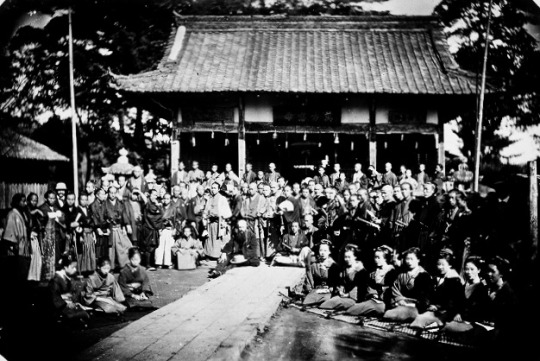

Dr. Bauduin's farewell party at Daikokuji temple, 1867.
Matsumoto Ryojun and Dr. Bauduin were likely acquaintances: both of them were doctors of Western medicine and had a keen interest in photography, small communities for their time. Additionally, Matsumoto had studied under Bauduin's predecessor, Pompe van Meerdervoort, at Nagasaki, and had been intimately involved in the foundation and spread of Western medicine in Japan.
I wonder if Dr. Matsumoto was invited to this event? Is he among the crowd lining up for pictures in front of the temple? We can see many Japanese doctors, who stand out among the samurai by their shaved heads, even though they also carry swords.
It makes me wish the images were more clear.
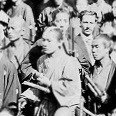

I always enjoy scanning through the crowds in big group pictures like these because you'll never know what small details you'll find.
On the left: I spotted these two samurai in the center of the second photo holding hands with each other in a kind of half-hug. No inference about their relationship from me, I just thought it was cute.
On the right: This one was taken from the first photo and it's the front row of men standing behind the geisha who are seated at the front right. My brain wants to say, look, it's Dr. Matsumoto on the left with Hijikata (middle) and Kondo (right). It's just my delusion. 😅
26 notes
·
View notes
Text
Trip to Mibu-dera
I accomplished my long-time dream of visiting Mibu-dera today! The Shinsengumi lived there for a couple of years in their early days ^-^ We couldn’t take any photos inside, but here are just a few of the photos from the day (please excuse my subpar photography lol):

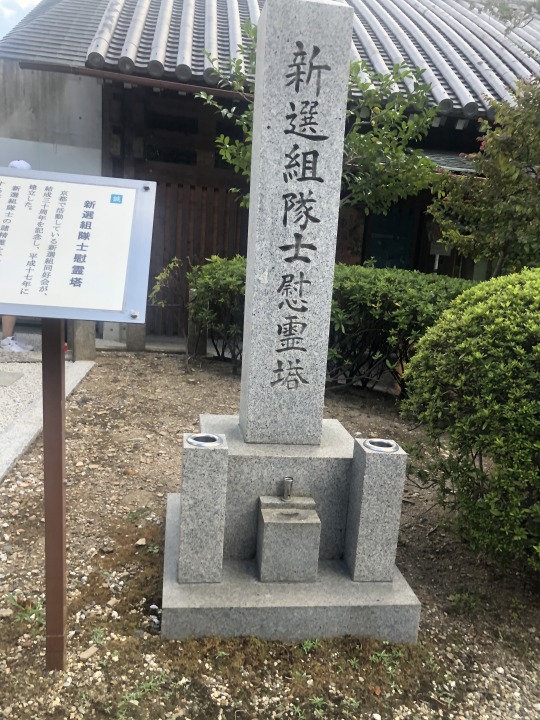
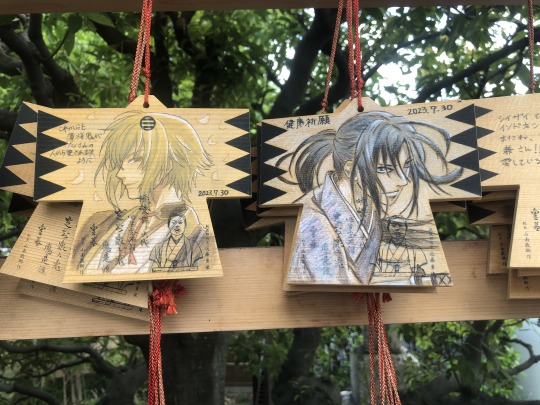
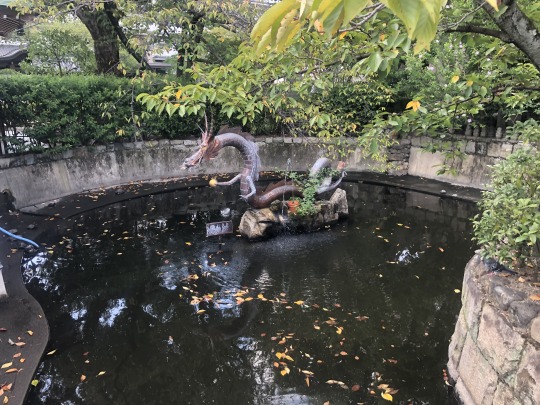
Although we couldn’t take photos inside, I want to mention that the inner part of the main temple was absolutely gorgeous. It was ornately decorated and houses a Buddhist statue that dates back to the Heian period.
In a room on the side of the temple you can see Hijikata and Kondo’s swords, as well as some of their letters. My kanji is limited and I couldn’t take out my phone for translation help, so I’m slightly embarrassed to say that I ended up asking some of the other museum patrons to explain things to me in more simple Japanese. Thankfully, people were really nice and I was able to learn a lot more thanks to them :)
I ended up buying a goshuincho and a bag from the gift shop. For those who don’t know, a goshuincho allows you to collect signatures from the various shrines you visit. The signatures serve as wonderful souvenirs to show where you’ve visited. Today alone I ended up collecting three signatures between Mibu dera, an enmusbi shrine, and then the Go’o shrine near the Imperial Palace.
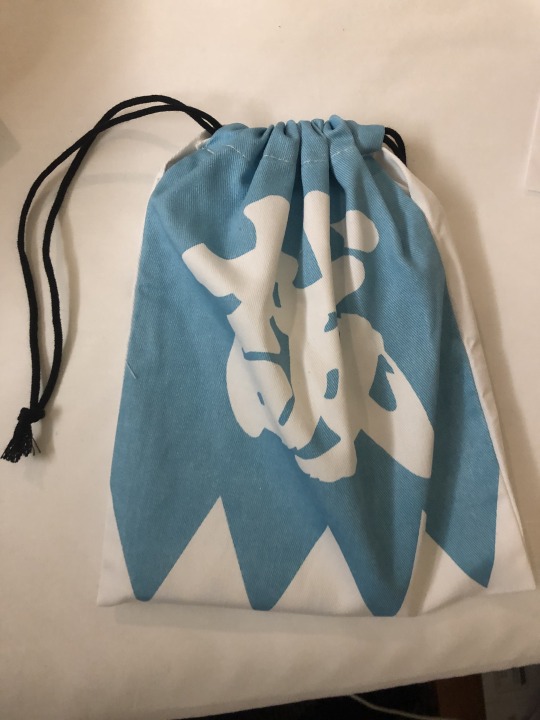

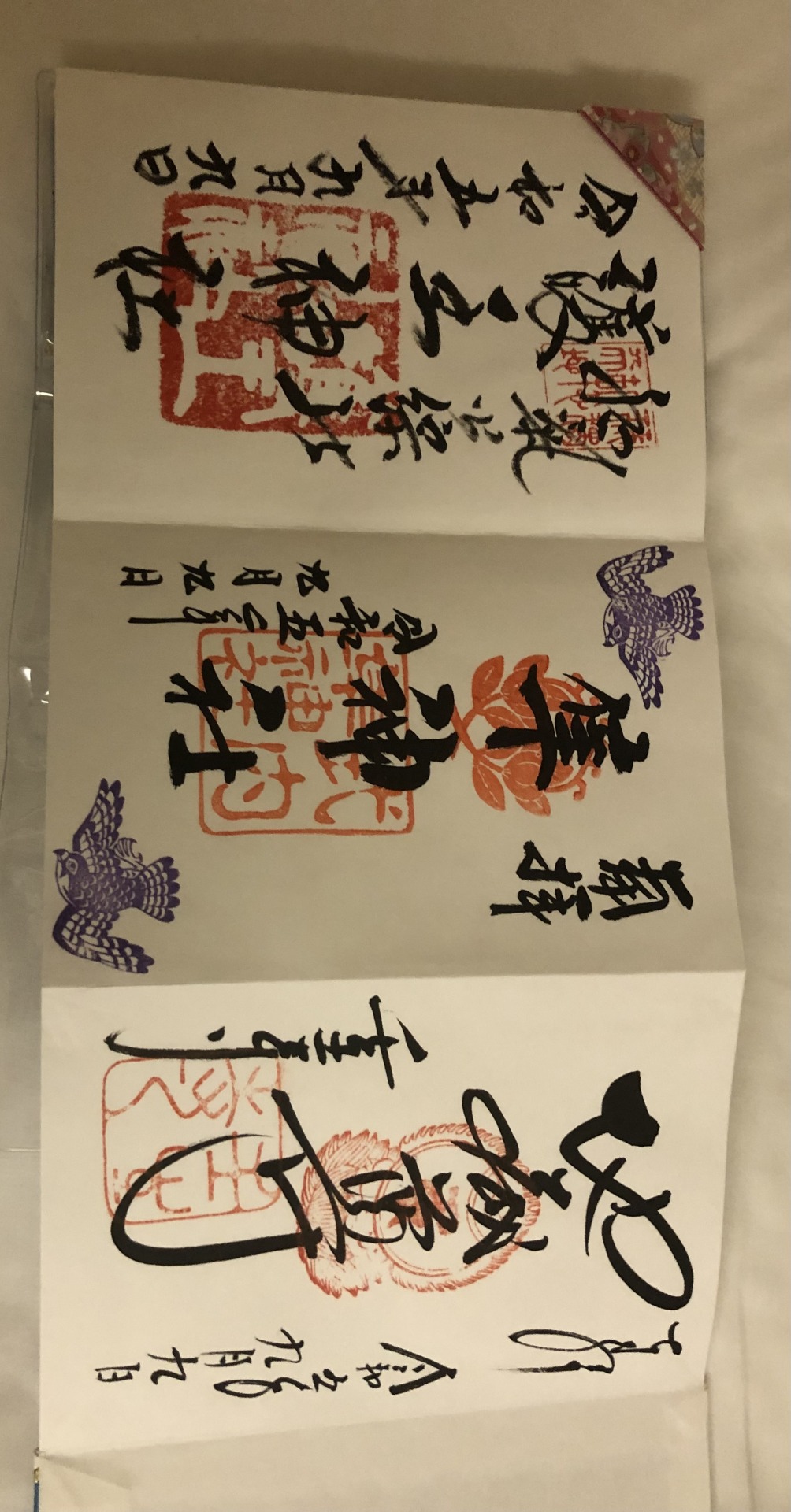
I worked hard touring Mibu dera, so of course I had to treat myself to some Shinsengumi ice cream afterward haha.

As you can see, the ice cream is blue and white, and the little cookie has Makoto inscribed onto it! The ice cream flavor was simple and milky, and the cookie had a pleasant almond taste. It was really refreshing and I recommend it! The shop is called Dandara Coffee and it’s right next door to the temple.
I still intend to go to the Yagi house and various other Shinsengumi spots around Kyoto, but luckily I’ll be studying here until May so I’ve got time! If you have any recommended spots in Kyoto or the surrounding areas (Shinsengumi-related or otherwise), I would love to hear them :D
74 notes
·
View notes
Photo
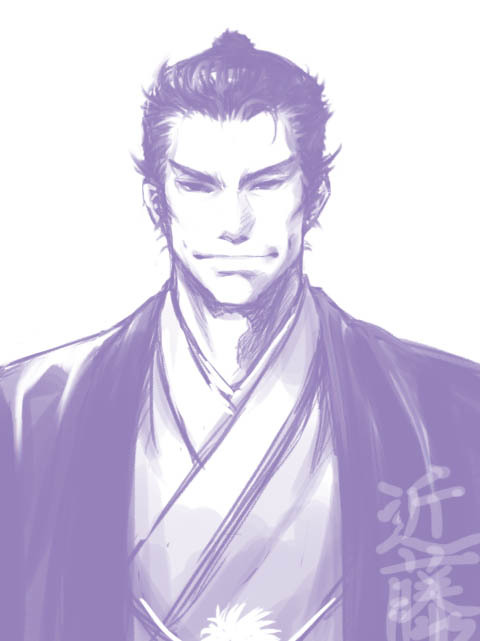

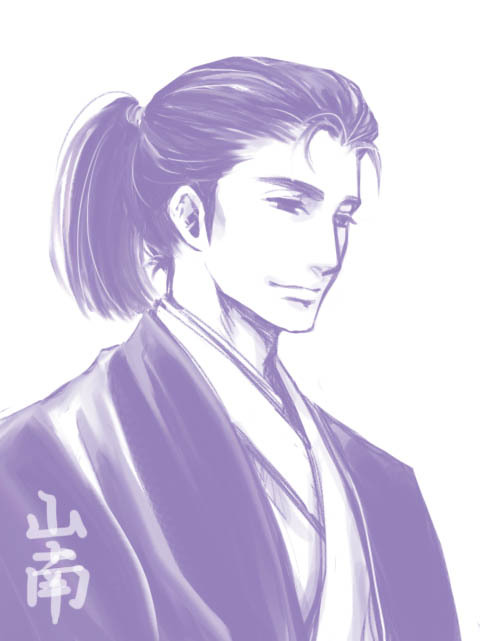




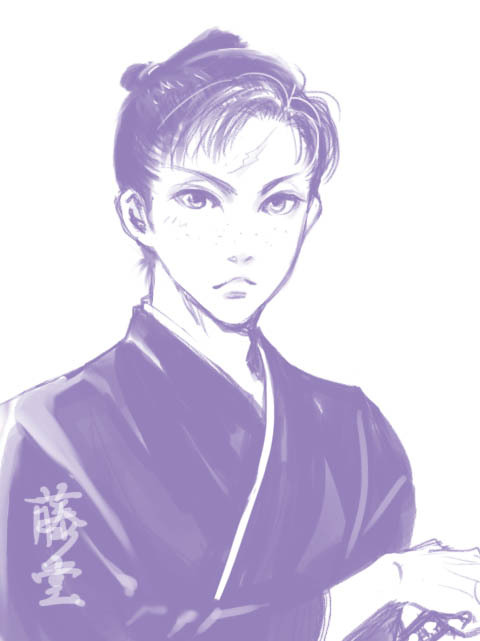
Original Shinsengumi - by Hirosaki
Her original character designs are wonderful; I want to see her take a stab at drawing a Shinsengumi manga!
420 notes
·
View notes
Text
So this the famous Kondo letter about homosexuality among the Shinsengumi.
I wonder if homosexual relationships were so prevalent that Kondo concluded nobody did the nasty with women lmao.
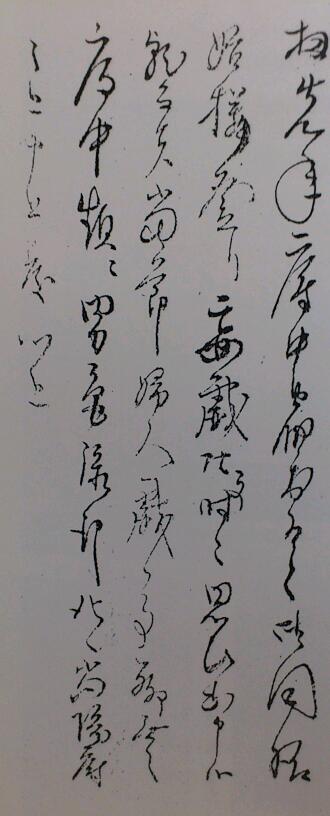
Letter from Kondo Isami dated May 20, Genji 1 (June 23, 1864) to Nakajima Jirobei (中島次郎兵).
The second line from the left reads, "Male sexuality is popular" (男色流行).

Original letter
(本文略) 尚々、��家内中様御尊父始メ御勇猛之至奉恐賀候。陳者尊兄健次郎様事市ヶ谷辺江御縁談之由、恐悦至極奉存候。 次ニ下拙義も素□愚魯身不顧尽忠報国有志御募リ相成、然馬合之局中ヲ預リ、州鄙客申述頻ニ心配致ゆへ□哉意外多病相成、依而去二月肥後守殿□なるへく温泉致候様、依之罷越候処僅七八日ニ而俄ニ 肥後守殿御役替ニ付飛脚到来、其夜五十丁十六里帰京致候。 併相応度候哉当節大丈夫ニ相成候間、御懸念可被下候間敷、且乍憚一統様暫時処公然様奉願上候。 一、扨先年府中宿おいて御同様始楼登リ、妄戯仕事時々思ひ出申候。就而者当節婦人戯候事聊無之。局中頻ニ男色流行仕候。尚帰府之上申上度。以上
Translation
(Text omitted) I would like to express my heartfelt gratitude to all of you, including your dear father, for your bravery. I am very pleased to hear of your older brother Kenjiro's marriage proposal and move to the Ichigaya area. Next, I have been recruiting volunteers to repay the nation with loyalty without regard for my own life, and have been entrusted with the affairs of bureaucrats. I've had too many worries on my mind and I have been unexpectedly very ill. Last February, Higo-no-kami-dono asked me to visit a hot spring, so I did. After just 7 or 8 days, a courier suddenly arrived with news of Higo-no-kami-dono's change of position, so overnight I returned to Kyoto at a distance of 50 blocks and 16 ri [16 hour walk]. At the same time, I would like to express my sincere gratitude to you for your concern. For the time being, I can only offer my best wishes. Now, I sometimes recall that last year when I was in Fuchu, we visited brothels and indulged in raunchy games. In that regard, people no longer play around with the ladies these days. Male sexuality is popular frequently throughout the headquarters. I would like to mention this to you upon my return to my home province. That is all.
Commentary
In the main text (omitted), he writes that he was disappointed in the Shinsengumi's position and its role, and that he considered disbanding the group, but was consoled, and so on. [T/N: This was before Ikedaya]
In the postscript, in addition to congratulating the Nakajima family on their happy event, he wrote that he had fallen ill due to hard work and went to a hot spring for treatment, as recommended by Katamori, but after about a week, Katamori informs him that he was to be reassigned to a different position. It is written that he returned to Kyoto, sick and beaten.
He then fondly remembers how they used to indulge in "raunchy games" together at a brothel in Fuchu, and tells them that these days there is no such thing as playing with women at all, and that "danshoku" (male sexuality) is prevalent within the Shinsengumi.
(source: www.toshizo.com)
Translator Notes
Instead of interpreting it as Kondo complaining about the prevalence of male sexuality, doesn't it sound like he's actually trying to convince Nakajima to go for male prostitutes together next time?
"I know we used to play around with women, but no one does that anymore. Here at the Shinsengumi HQ, we do male love all the time. Just something I wanted you to know before I visit you ;)" 😂
46 notes
·
View notes
Text
I mean, of the whole army, she had to pick Hijikata and Okita, the most popular ship in yaoi Shinsengumi manga? No suspicious at all...
A thought while commuting home tonight:
How did the teacher's great-grandmother know that Okita Soji's body is beautiful?
Hear me out.
When someone is wearing kimono and hakama - two items essential to any samurai venturing outside his own home during the Edo period - there's not actually a whole lot you see of the body.
It's not like modern clothes where you can tell someone has a nice butt in jeans or sculpted abs under a fitted T-shirt.
So, I have this picture of great-grandma (who was, at the time, obviously a young woman), either peeking through the fence or looking over the fence from the second story of her home or perhaps her property's store house (if either of these existed), to catch a glimpse of her Shinsengumi neighbors with their clothes off.
Which makes this whole BL-neighbor-fiction tale even more hilarious.
... also, I'm kinda wondering what gave her the idea to ship Hijikata with Okita in the first place.
What are you two doing in the Shinsengumi camp that is inspiring this woman?
52 notes
·
View notes
Text
I think Tiger is well suited for Okita, considering what I read about him.

Shinsengumi Japanese zodiac.
(I used a Zodiac calculator to figure out the zodiac for each person based on their birthday, and pulled info about the zodiac traits from two different websites.)
Kondo Isami (9 Nov 1834)
Horse 午. Horses are cheerful, sociable, and decisive. They are also versatile and excel in many fields, but tend to get bored easily and leave things unfinished. They do not like to work for other people because they appreciate their freedom. They never let opportunities pass, although sometimes they tend to be a bit imprudent. They exhibit a vain streak and are big spenders. Horses are skillful in paying compliments, likely to get into trouble for a slip of the tongue, and quick to catch on to a trend.
Hijikata Toshizo (31 May 1835)
Sheep 未. Sheep are caring, considerate, sympathetic, and cherish friendship. They always seek out other people. They are endowed with artistic talent, and are passionate in whatever they do and believe in. They are also noble and generous. However, they can be sensitive and tend to worry unnecessarily over small matters. Sheep are keen to learn new things, always complaining, and often suffer from insomnia.
Sannan Keisuke (5 Feb 1833)
Snake 巳. Snakes are deep thinkers, great observers, and possess tremendous wisdom. Snakes think things through before speaking. They do not like conflicts, and get along with anyone. However, their tendency to avoid conflict can put them under considerable stress. They can be overly logical, distrustful, or jealous. Snakes are fortunate in money matters, have introverted natures and are sometimes not good at expressing themselves. Snakes take failures very personally.
Okita Soji (8 July 1842)
Tiger 寅. Tigers are proud, courageous, and generous. Being decisive and quick-witted, they are potentially great leaders. They are very competitive; they don't give up, and they really like the feeling of winning. On the negative side, they do not like to follow orders, can cause interpersonal friction with others, and can impulsively act on their emotions. Tigers do not make plans, sometimes fail due to overconfidence, and have great sympathy for those they are close to and love.
Saito Hajime (18 Feb 1844)
Dragon 辰. Dragons are energetic, brave, honest, and can inspire trust in almost everyone. They are ambitious in their self-improvement, charismatic, and confident. However, they are also short-tempered and very competitive, so they tend to have as many enemies as friends. Dragons work better as individuals than in groups and speak their mind without reservations. They always help the weak.
... And for good measure, the zodiac for Okada Izo as well, since he's kind of taken over my tumblr.
Okada Izo (14 Feb 1838)
Dog 戌. Dogs are patient, strong-willed, and honest. They have a strong sense of duty and loyalty, and always strive to succeed. They are the protectors of their family and friends. However, they are also very stubborn, and do not like to admit their own faults. Dogs tend to easily get into negatives thoughts, but they can be trusted with secrets and inspire confidence in others.
68 notes
·
View notes
Text
Wow I had no idea!
About Nanae Chrono (PMK mangaka)
Since I have seen some people confused about it, I make this post to clarify the gender of Nanae Chrono, the mangaka of Peacemaker Kurogane.
For many years, we read by articles and manga editions that Nanae Chrono was a woman, however, in late 2021 after making a Twitter account, Chrono came out as a trans man and literally put on his bio "FTM". Because he broke those news on Twitter and he's not that popular of a mangaka (sadly) many people are unaware of this fact and so continue to refer to him as "she/her" even in Japanese articles, but the truth is that he identifies as male and thus we started to refer to him in this blog as "he/him", although he hasn't said on Twitter what pronouns he prefers in English.
You can check his Twitter here (although warning he often RTs NSFW art) and see his bio to check it out!
61 notes
·
View notes